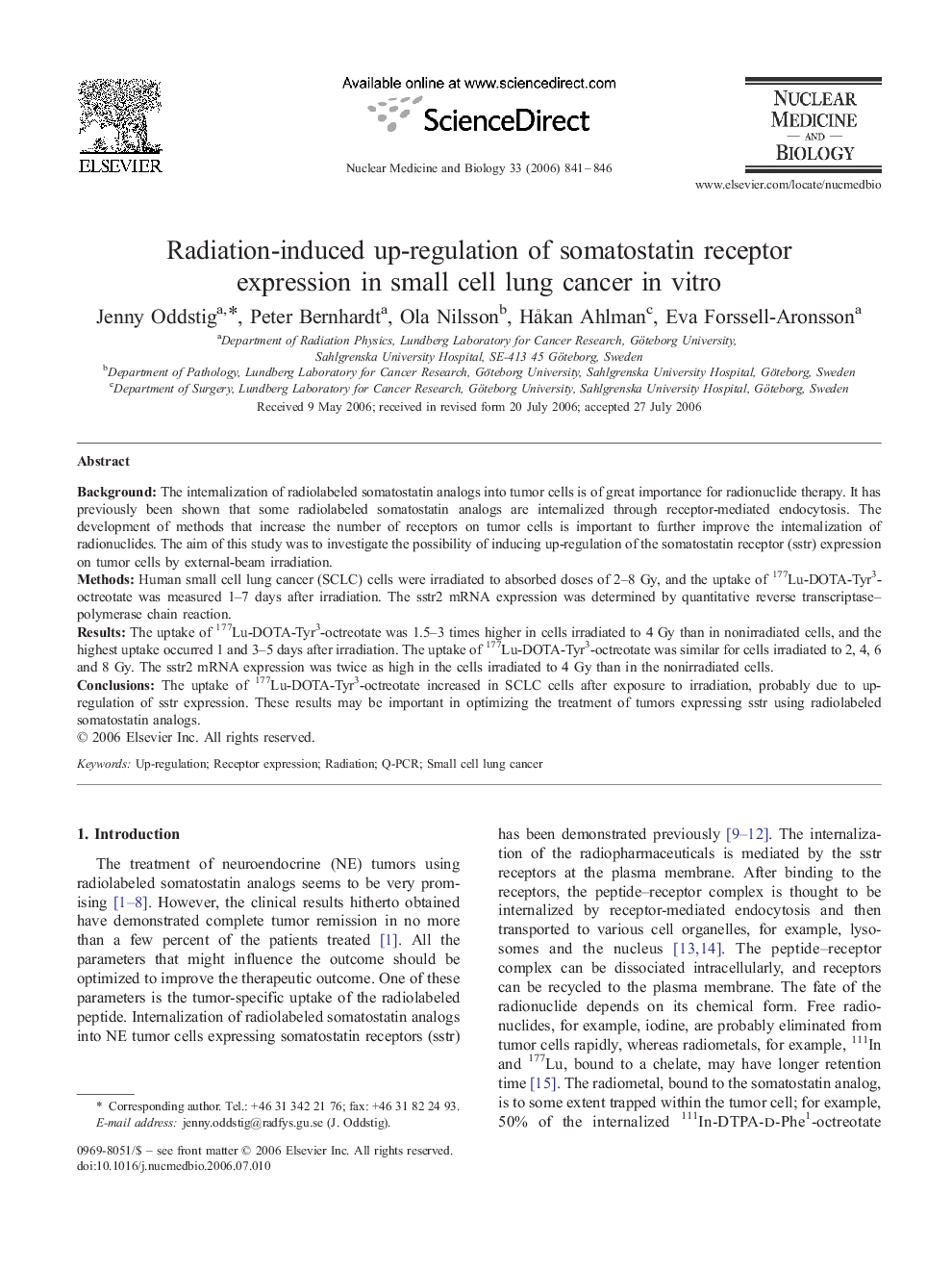| Article ID | Journal | Published Year | Pages | File Type |
|---|---|---|---|---|
| 2154666 | Nuclear Medicine and Biology | 2006 | 6 Pages |
BackgroundThe internalization of radiolabeled somatostatin analogs into tumor cells is of great importance for radionuclide therapy. It has previously been shown that some radiolabeled somatostatin analogs are internalized through receptor-mediated endocytosis. The development of methods that increase the number of receptors on tumor cells is important to further improve the internalization of radionuclides. The aim of this study was to investigate the possibility of inducing up-regulation of the somatostatin receptor (sstr) expression on tumor cells by external-beam irradiation.MethodsHuman small cell lung cancer (SCLC) cells were irradiated to absorbed doses of 2–8 Gy, and the uptake of 177Lu-DOTA-Tyr3-octreotate was measured 1–7 days after irradiation. The sstr2 mRNA expression was determined by quantitative reverse transcriptase–polymerase chain reaction.ResultsThe uptake of 177Lu-DOTA-Tyr3-octreotate was 1.5–3 times higher in cells irradiated to 4 Gy than in nonirradiated cells, and the highest uptake occurred 1 and 3–5 days after irradiation. The uptake of 177Lu-DOTA-Tyr3-octreotate was similar for cells irradiated to 2, 4, 6 and 8 Gy. The sstr2 mRNA expression was twice as high in the cells irradiated to 4 Gy than in the nonirradiated cells.ConclusionsThe uptake of 177Lu-DOTA-Tyr3-octreotate increased in SCLC cells after exposure to irradiation, probably due to up-regulation of sstr expression. These results may be important in optimizing the treatment of tumors expressing sstr using radiolabeled somatostatin analogs.
